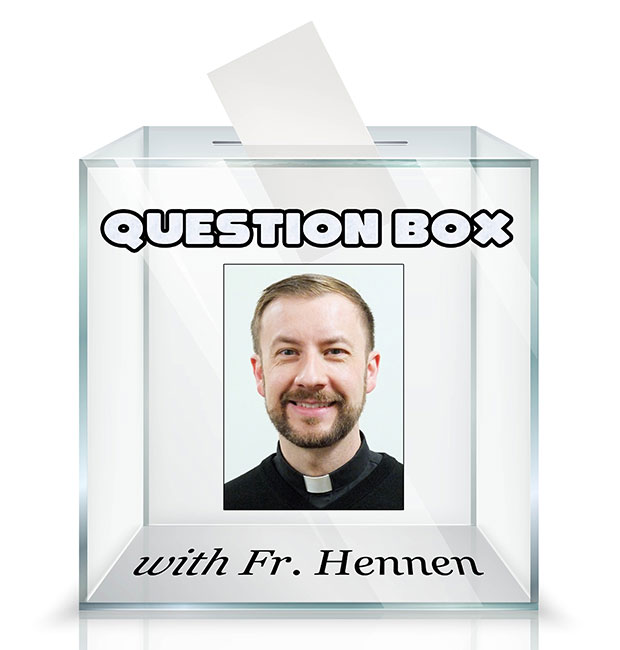 Q: Can you explain relics? If we are supposed to respect the body even after death, why do we allow for this practice with the bodies of saints?
Q: Can you explain relics? If we are supposed to respect the body even after death, why do we allow for this practice with the bodies of saints?
A: Great question! Typically, we speak of three “classes” of relics, only one of which are parts of the body. First-class relics are indeed the physical remains (often bone or hair, etc.) of a canonized “saint” or “blessed” (someone who has been beatified, in the process of canonization). Second-class relics would be personal items that belonged to or were used frequently by a saint or blessed (clothing, rosary, prayer book, etc.). Third-class relics would be anything that touched either a first- or second-class relic.
Interestingly, in my research on this question I discovered that this three-tier classification of relics is more tradition (with a small “t”) than any official categorization by the Church. The 1917 Code of Canon Law simply refers to “important relics” as being “the body, head, arm, forearm, heart, tongue, hand, leg or other part of the body… provided it is intact and is not little” (can. 1281 §2).
The 2002 Directory on Popular Piety and the Liturgy from the Congregation for Divine Worship and the Discipline of the Sacraments notes: “The term ‘relics of the saints’ principally signifies the bodies — or notable parts of the bodies — of the saints…Objects which belonged to the saints, such as personal objects, clothes, and manuscripts are also considered relics, as are objects which have touched their bodies or tombs such as oils, cloths, and images” (par. 236). You can see how the three-tier system seems to be inferred here.
A 2017 document from the Congregation for the Causes of Saints states: “The body of the Blesseds and of the Saints or notable parts of the bodies themselves or the sum total of the ashes obtained by their cremation are traditionally considered significant relics.” It continues: “Little fragments of the body of the Blesseds and of the Saints as well as objects that have come in direct contact with their person are considered non-significant relics.”
Still, why do we do this? It all seems a bit macabre. Because we are corporeal (bodily) creatures, we have an innate desire to hold onto things as a way of remembering. Certainly, our sacramental worship reflects this. We experience the unseen in the seen, the spiritual in the physical. It is all very incarnational and, in my opinion, richly Catholic.
I would be willing to bet that most anyone who has lost a loved one has kept some little memento of that person — hopefully not something like their head or other part of their body. That would indeed be a little creepy, but perhaps a favorite article of clothing, a letter, a piece of jewelry or even a lock of the person’s hair. This reminds us of the person, that they were real, that our love for them was real. While the Church clearly instructs that the bodies or remains of our deceased loved ones should be properly buried, I can understand why people would want keep some part of them.
We allow this, with careful restrictions, for saints and blesseds for a couple of reasons. First, it is a way of spreading devotion to them. The fact is, we have friends in heaven who once walked this earth and we need their prayers.
Second, it is easy to make saints into almost fictional “super heroes,” especially if they lived a long time ago in a far off place. It is good to be reminded that they were people of flesh and blood and bone.
(Father Thom Hennen serves as the pastor of Sacred Heart Cathedral in Davenport. Send questions to messenger@davenportdiocese.org)










